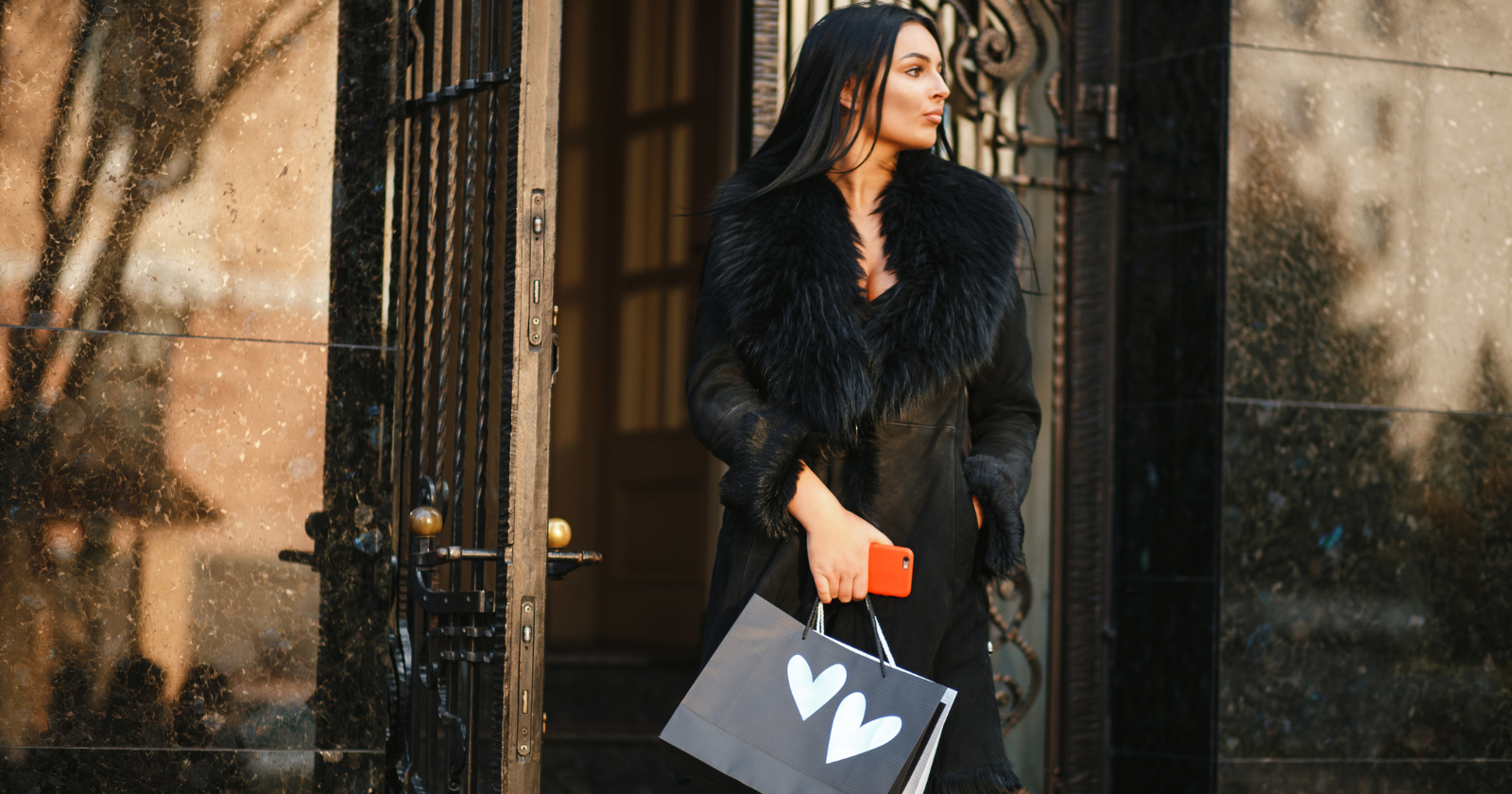Class is slippery when you try to write about it. It’s not just money; it’s habits, incentives, and what a given group is trying to signal (or not signal) to the world. Accessories are where those signals get loud.
This isn’t a dunk on anyone’s taste. I grew up lower middle-class; I know exactly why certain pieces feel like a little parade you get to carry.
Later, around wealthier circles, I noticed a different rulebook: “If you know, you know”—and if you don’t, they’re not going to explain it.
Here are ten fashion accessories many lower middle-class women love—often for joy-filled, practical reasons—that upper-class women quietly avoid.
For each, I’ll unpack the why, what it signals, and how to keep the vibe you love without letting the accessory wear you.
1. Loud logo totes and monogram everything
There’s a real thrill to carrying a bag that announces itself. It says, “I’ve made it,” or at least “I’m on my way.” For a lot of us, that first logo tote is a milestone purchase—durable, roomy, recognizable.
Why the upper class avoids it: the “quiet luxury” script favors understatement.
A bag that whispers quality (leather, construction, patina) over brand billboards fits a world that prizes privacy and insider knowledge. Recognition happens among people who notice stitching and silhouette, not prints.
If you love the look: keep the structure and scale, mute the print. Think one discreet stamp (or none), sturdy handles, and a material that ages well. You still get presence—just less announcement.
My aunt saved for months for a monogram tote. She planned its debut like a wedding, and we clapped in the living room. Years later a client’s mother (old money) held a beat-up, unbranded tote that looked like it’d traveled the world.
Same silhouette, different signal: hers said “my life has stories,” not “my bag has a logo.” Both were valid joys—just two dialects of the same language.
2. Statement belts with giant buckles
A bold belt feels like instant waist and instant outfit. Big logos, oversized hardware, sometimes rhinestones—fun, photogenic, commanding.
Why the upper class avoids it: logos at the center of the body are considered…loud. The more moneyed aesthetic prefers belts that disappear into tailoring and quietly do their job (hold shape, add polish) without becoming the headline.
If you love the look: swap scale for texture. A good leather belt with a refined buckle or an interesting weave still frames your waist and reads “intentional”—without shouting.
3. Matching jewelry sets
Necklace + earrings + bracelet in one coordinated set feels complete. It’s the “I’m put together” accessory bundle a lot of us grew up seeing at weddings and graduations.
Why the upper class avoids it: matchy-matchy reads retail floor, not personal style. Wealth often prefers edited—maybe heirloom studs with a modern cuff; pearls with denim; one exceptional piece, everything else quiet.
If you love the look: keep one hero and let the others support. Try the necklace with tiny studs, or the bracelet with bare neck and dramatic ring. Cohesion, not duplication.
4. Crystal-heavy evening clutches
A sparkly clutch is event shorthand. It catches the light, photographs well, and makes a simple dress feel festive.
Why the upper class avoids it: very literal glam can feel prom-adjacent. They’ll carry a slim satin minaudière, a vintage box bag, or a small, unbranded envelope in a deep neutral—something that doesn’t compete with the clothes.
If you love the look: choose one sparkle zone or deepen the tone—gunmetal crystals on matte, or a sleek fabric with one metal accent. You want glow, not glare.
5. Oversized sunglasses with mirrored lenses and big side logos
They’re protective, they’re dramatic, and they whisper celebrity—even if you’re just at the pharmacy.
Why the upper class avoids it: giant mirrored lenses + visible branding is paparazzi cosplay. The quieter play is a classic shape (wayfarer, cat-eye, oval) with solid lenses and barely-there marks.
If you love the look: keep the oversized silhouette, lose the mirror and trim the temple logos. Let the frame’s proportion, not the stamp, do the flexing.
6. Platform heels and sky-high stilettos
Tall shoes can feel transformative—longer line, instant posture, photos that slap. They also read “occasion” and “effort.”
Why the upper class avoids it: money is mobility. When your life involves grass lawns, cobblestones, boat decks, gallery floors, and long dinners, shoes you can walk in signal confidence and access. They’ll choose block heels, kitten heels, or elegant flats.
If you love the look: platform but refined—clean vamp, stable base—or go for a pointed-toe flat/low heel to keep the leg line without the wobble. Comfort is chic.
7. Big hair accessories covered in pearls, bows, or logos
Crystal headbands, bejeweled clips, hair bows—these read feminine and fun, and they can rescue a messy hair day.
Why the upper class avoids it: overt decoration in hair nods bridal or childlike. They default to skinny tortoiseshell clips, silk scrunchies, thin headbands in solid hues—functional first, then pretty.
If you love the look: pick one polished piece—satin ribbon in a deep color, a single pearl barrette, or a minimal metallic clip. Proportion close to the head keeps it adult and elegant.
8. Stacked bangles and charm-heavy bracelets
Jangle is joyful. Stacks tell a story; charms feel like souvenirs you can wear.
Why the upper class avoids it: noise—literal and visual. A single cuff, a slim tennis bracelet, or one sentimental chain reads as “I know this piece,” not “I bought the whole display.”
If you love the look: edit your story. Wear three that mean the most; rotate the rest. Or stack within one material (all gold-tone, all leather) to quiet the cacophony.
9. Obvious designer scarves
Logos, equestrian prints, bold borders—scarves are beautiful canvases. They also telegraph brand fluency instantly.
Why the upper class avoids it: they’ll absolutely wear heritage scarves, but often in muted ways (belted, tied on a bag, under a coat) or they’ll choose solid cashmere/silk that reads purely as texture.
If you love the look: style it less literally—fold to show color blocks, tie smaller, or choose a tonal print. Let it complement your face, not advertise for the mothership.
10. Phone cases, keychains, and wallets with bling
Daily objects get “dressed up” with charms, rhinestones, and statement prints. It’s fun and it’s how a lot of us personalize basics.
Why the upper class avoids it: quiet hardware, simple leather goods, and slim silhouettes say “I’m not auditioning; I’m operating.” They want their things to disappear into a coat pocket and reappear looking the same five years later.
If you love the look: one elevated detail—contrast stitching, an embossed initial, or a rich color—adds personality without veering into novelty. Think “longevity with a wink.”
What’s really going on underneath
This isn’t about who has better taste. It’s about incentives and environments.
-
Signaling: Working- and lower middle-class women often use accessories to celebrate hard-won milestones. Visibility is the point. Upper-class women often signal through understatement; status hides inside materials, cut, and condition.
-
Maintenance & mobility: If your calendar includes walking on grass in heels or lugging kids/groceries/gear, you optimize for comfort and durability. Wealth buys environments where stilettos make less sense—and wardrobes adjust.
-
Privacy: Upper-class circles prize not being read by strangers. Discretion is baked into the aesthetic. Logos can feel like disclosures they didn’t consent to.
-
Practice: When you grow up around certain objects (scarves, leather goods, heirloom jewelry), you learn how they age and how to style them with restraint. When you don’t, maximalism feels safer because it reads as “finished.”
How to keep the joy and upgrade the read
You don’t need a new income bracket to adopt the parts of “quiet” style you actually like.
-
Edit, don’t erase. Keep the logo tote you love; rotate in one unbranded workhorse. Let contrast teach you what feels best on different days.
-
Swap shine for sheen. Trade rhinestone glare for satin, patent, brushed metal, or mother-of-pearl. You’ll still glow—just smoother.
-
Pick one hero per outfit. Big belt or big earrings or big bag. When one thing sings, everything else can harmonize.
-
Prioritize materials and maintenance. A clean, conditioned, well-kept piece—no matter the brand—reads more expensive than a famous one that’s scuffed and shedding.
-
Think proportion. A smaller, closer-to-body accessory often reads pricier than a large, floppy one. Same budget, different footprint.
-
Fall in love with neutrals that aren’t boring. Deep navy, oxblood, forest, camel, charcoal—colors that play well with everything make even loud days feel grounded.
A stylist friend once took me thrifting with a $60 cap. She made me put back a shiny logo belt and handed me a narrow, no-name leather belt in perfect condition, a silk scarf in colors that flatter my face, and a structured crossbody with clean lines.
I wore the belt and bag for years; no one asked the brand, but people constantly said, “You look so pulled together.” That trip rewired my brain: you can spend less and look more expensive by prioritizing shape, condition, and texture over print and plaque.
A quick note on class and kindness
If the list landed a little spicy, here’s the heart: taste is a story we learn. Lower middle-class women often master celebration dressing—the kind that turns Tuesday into an event. That’s a skill; keep it. If you want your wardrobe to travel across rooms without translation, borrow a few quiet moves, not because loud is wrong, but because versatility is power.
Wear what delights you. Accessorize like you’re allowed to enjoy your life (because you are). And if you decide to experiment with the “whisper” approach, consider it another fluency—one more language you can switch into when the moment asks for it.
Joy can be loud or soft. The point is that it’s yours.
What’s Your Plant-Powered Archetype?
Ever wonder what your everyday habits say about your deeper purpose—and how they ripple out to impact the planet?
This 90-second quiz reveals the plant-powered role you’re here to play, and the tiny shift that makes it even more powerful.
12 fun questions. Instant results. Surprisingly accurate.
link

